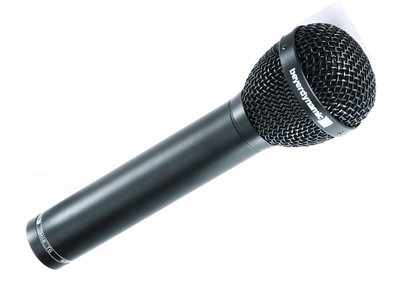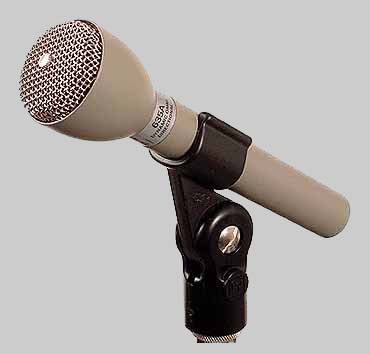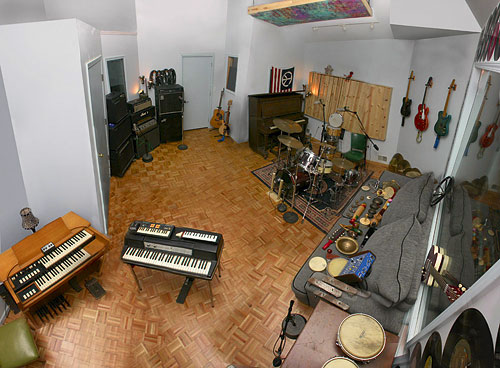Focus and Power: An Ode to the Dynamic Microphone
This story first appeared in Trust Me, I’m a Scientist, October 3, 2011.
Advertisers will have you believe that condenser microphones are the key to quality recordings. In the past, these super-sensitive transducers were the elite of the microphone world and commanded high prices. In recent years, it seems there’s a new low-cost large-diaphragm condenser released every month, and the conventional wisdom suggests you’re going need a few of them to make professional-sounding records.
But whatever happened to dynamic mics? Although they may have lost some of their cache to condensers and ribbons, these rugged, no-nonsense mics are still essential in the pro studio. They’re also a smart, affordable choice for the home recordist. Today, a few hundred dollars can afford you the bottom-of-the barrel in condenser and ribbon mics – or, a top-of-the-line dynamic.
Even with the price aside, the longer I make records, the more I find myself reaching for dynamic mics. Somehow, they give me a sound that’s closer to what I hear in my head.
There are a few good reasons for this. I often hear more focus out of dynamic mics. Even in cardioid, condenser mics can pick up a lot of what is happening around the source. I hear the walls, and the floor, the air around the sound. And when I add compression, the sound of that extra space can end up distracting me from the source I wanted to record in the first place.
Dynamic mics don’t only bring focus in terms of space; They bring focus to tone as well. The truth is that many dynamics roll off frequencies at the very top and bottom of the frequency spectrum. While this may seem bad on paper, in reality, good mixes allow room for each track. If every sound is recorded with every overtone represented, with every bit of low-end intact, it’s going to be quite hard to make sense of all those elements in the mix. Without some much-needed pruning, we’re left with a giant mess.
A couple of years ago, I created a post for the Tape Op Message Board titled “Everything is an EQ.” Ever since I heard the phrase used by Nashville engineer Steve Marcantonio it’s stuck in my head.
I still believe it today: Every choice we make, from guitar picks to mic-placement effects our tone, and dynamic mics are no exception. They can even be one of the more powerful tools available to help shape our tones.
Manufacturers often go to great lengths to design modern condenser mics with neutrality in mind, hoping to complement as wide a variety of sources as possible. Many dynamic mics on the other hand, can help add color to our sources. I’ll often rely on various dynamics in a tracking session, knowing their different tonal signatures will allow me to place each track into its own space in the production.
For rich, clear, full tones, I may reach for a Beyerdynamic M88 – It’s great for guitar amps, bass amps, and vocals. As much as I use this mic, it still surprises me. I recently discovered just how amazing it sounds on a Leslie cabinet.
Some of Beyer’s other models including the TGX50, M380 are notable for being great at capturing sources with big, clear low end. Their M201 fills yet another niche, with many savvy engineers picking it as a favorite on snare drum and guitars. Steve Albini of Electrical Audio says of this model: “If the SM57 were a microphone, it would sound like this.”
In the mic locker at Oxide Lounge, we have several old Electro-Voice models that sound a little more focused than your average mic; smaller maybe, but in a good way. I’ll bring them out often for overdubs and solos. As I pull up the the fader. I’ll immediately hear how they help overdubbed tracks find new space alongside those we’ve already laid on tape.
One strange and wonderful little mic from the Electro-Voice line is the EV 635a. It’s a classic dynamic omni from the 70s, often used by newsmen during on-the-spot interviews. This model has a unique tight, hard sound that makes them really interesting drum room or overhead mics, and very useful as secondary guitar mics, where they can pick up the room, or be shoved right up to a speaker without worry of proximity effect.
The barrel-shaped RE-20 (or PL-20) is another EV model that exhibits no discernible proximity effect. It’s a favorite in many studios for voiceover, kick drum, bass guitar, vocals and toms. (That reminds me to get mine fixed!)
But if we’re going to talk about toms, my personal favorite is the Sennheiser 421. To my ears they are still the sound of rock toms – Clear, full, hits-you-in-the-chest rock toms. They’re also great on bass, sometimes on guitars, or the bottom of a Leslie cabinet (if you’re so inclined). Even certain vocals sound perfect on a 421. This model features a 5 position bass roll-off switch for voice, which honestly, I rarely use
(Editors Note: I’ll have to butt in and add a recommendation for the EV RE-11 RE-15, 666, and similar models for unique electric guitar, horn and room sounds. The Shure SM7 is also ubiquitous for a reason, delivering big, meaty snare sounds, focused vocal takes, and electric guitar tracks that sound equal parts viscous and vicious.)
The next time you’re drooling over mics in some glossy catalog, don’t forget to take a little time to peruse the dynamic mics. They aren’t just for the stage!
Tony SanFilippo is the owner/operator of Bloomington Illinois’ Oxide Lounge recording studio, and a veteran drummer. He also plays a lot of poker.









